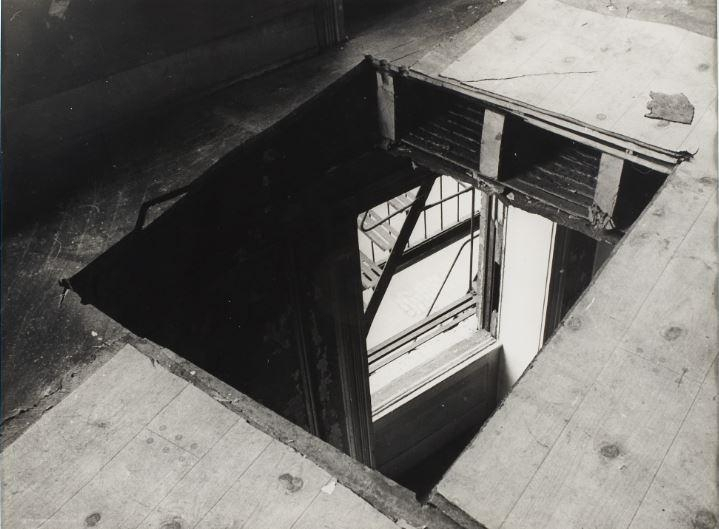This month, the sprawling exhibition “Gordon Matta-Clark: Anarchitect”1 takes over the Bronx Museum of the Arts — a fitting survey for an artist who used the city as his material. Pictured here is Matta-Clark creating his work Bronx Floor: Threshole (1972), which he made by putting geometric cuts into the floors of abandoned Bronx buildings. The son of surrealist artist Roberto Matta and a graduate of the Cornell School of Architecture, Matta-Clark took a guerrilla approach to both his work and his environs, perhaps best exemplified by Window Blowout (1976), a series of photos of desolate housing projects included in an exhibit at the Institute for Architecture and Urban Studies in midtown. The night before the exhibit opened, Matta-Clark took an air gun and shot out the building’s windows, infuriating the institute’s founder, architect Peter Eisenman. The next day, Matta-Clark’s photos were removed from the exhibit and he was barred from the gallery. He died in 1978, of cancer, at 35 — and his work is once again drawing attention.
....
- 1. Gordon Matta-Clark: Anarchitect - Exhibitions - The Bronx Museum of the Arts
Best known for his monumental cuts, holes, apertures, and excisions to the facades of derelict homes and historic buildings in New York, New Jersey, Chicago, and abroad, Gordon Matta-Clark’s work conveys a potent critique of architecture's role vis-à-vis the capitalist system. Taking as a point of departure the pivotal series of “cuts” produced in the Bronx in the early 1970s that led to his further exploration of the city as a field of action, Gordon Matta-Clark: Anarchitect will examine the artist’s pioneering social, relational, and activist approach. The exhibition highlights the political dialogue inherent in the artist’s artistic interventions—from his concern for the extreme plight of the homeless, his interest in direct community engagement, his belief that we should expand our lived experience of a city into its underground and other inaccessible spaces, and his commentary on development and socioeconomic stratification.
Gordon Matta-Clark: Anarchitect includes over 100 artworks by the artist, rarely seen materials from his archive, and immersive film projections. On view beginning November 2017, Gordon Matta-Clark: Anarchitect is organized by Antonio Sergio Bessa, Bronx Museum Director of Curatorial and Education Programs; and Jessamyn Fiore, independent curator and co-director of the Matta-Clark Estate. Following the Bronx Museum presentation, the exhibition will travel to the Jeu de Paume in Paris, France, the Kumu Art Museum in Tallinn, Estonia and the Rose Art Museum, in Waltham, Massachusetts.
Gordon Matta-Clark: Anarchitect exhibition and catalogue are made possible by the Henry Luce Foundation, National Endowment for the Arts, Graham Foundation for Advanced Studies in the Fine Arts, Blue Rider Group at Morgan Stanley, David Zwirner, Estate of Gordon Matta-Clark, and Furthermore: a program of the J. M. Kaplan Fund.
